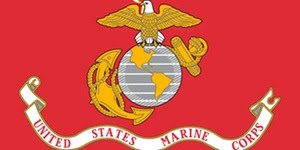|
I’d like to make two brief introductions. Introduction 1: My name is Mariana Grohowski. I am an Assistant Professor of English at Indiana University Southeast. Introduction 2: The second and more important introduction I seek to facilitate is to introduce the inaugural issue of the Journal of Veterans Studies (JVS). I founded JVS in November 2015 after three years of receiving journal article rejections based on the focus of my research on women veterans. Indeed, I noticed a lack of referred publication venues for interdisciplinary research and writing on and about the issues and experiences of military veterans. JVS is the only refereed, open access, interdisciplinary, online journal focused on veterans studies. I published the inaugural issue, thanks to the help of generous reviewers and an amazing editorial board, in July 2016. I hope many people will find the articles to be of interest. The inaugural issue contains eight original research articles and three reviews: two of books and one on a work of new media). The entire issue is available online (open access) by clicking here. Because I suspect many readers may be unfamiliar with the term "veterans studies,” please allow me to briefly explain my use of the term. Veterans studies scholars are interested in studying how society views and treats "the veteran" as well as how "the veteran" views him/herself. In short, veterans studies is an multi-faceted, scholarly investigation of military veterans and their families. Topics oftentimes include, but are not limited to: combat exposure, reintegration challenges, and the complex systems that shape the veteran experience. Veterans studies, by its very nature, may analyze experiences closely tied to military studies, but the emphasis of veterans studies is the “veteran experience,” i.e., what happens after the service member departs the armed forces. Scholars of veterans studies pursue their work in such fields as Rhetoric and Composition, Literature, History, Social and Behavioral Sciences, and Student Affairs (among others). Likewise, the work of veterans studies occurs in and outside of formal education--by current members of the military, leaders of nonprofits, independent artists, grassroots activists, and students taking courses in veterans studies--indeed, "veterans studies" designated programs have been established at four public universities in the U.S. Questions that drive veterans studies scholars and are the sorts that the Journal of Veterans Studies seeks to promote may include: (1) Who is "the veteran in society?" (2) How do power structures like race, class, gender, and sexuality affect the veteran from claiming his/her "veteran-ness"? (3) Who “counts” as a veteran? In closing, there are two ways all readers can work in to promote and sustain JVS: (1) Spread the word about the journal your friends. Even those you think might be tangentially interested. Let them know the journal is live. Encourage your friends to subscribe and contribute. Share this convenient URL:
(2) Consider submitting an article, announcement, book or media reviews, interviews, and program or organizational profiles to the journal for publication. JVS will only succeed if people take time to send us their ideas. Full submission guidelines are available here. The American Legion’s official training program for officers, members, Legion College applicants and those who simply want to expand their knowledge of the nation’s largest veterans service organization is now available online.
The American Legion Extension Institute has been rewritten, updated, streamlined and enhanced with videos, digital photos, clickable links, a historical timeline and additional features. To register and take the course, visit www.legion.org/alei. (Due to high traffic volume, you may experience some delays. If you experience delays, please try again later.) The program should take less than two hours to complete. It is divided into six sections, with a quiz at the end of each one, followed by a final exam. The sections closely follow the Legion’s Four Pillars of service. They include:
The American Legion Extension Institute online training program replaces the series of printed booklets that had been printed and sold through National Headquarters. Event to be held at the following time, date, and location:
Wednesday, September 7, 2016 11:00 AM to 2:00 PM (PDT) Pyramid Alehouse 1201 1st Ave S. Seattle, WA 98134 View Map Click here to register. |
Call to Action!Find out about upcoming activities and events by clicking on the RSS Feed below and get notified when information is posted. Ask questions, provide updates, and stay in touch by posting a comment. Please don't use profanity or inappropriate language/images. Member InfoArchives
January 2024
Categories
All
|
|


